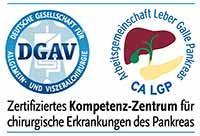About the disease
Parathyroid adenoma originates in parathyroid glands, which are located in the vicinity to the thyroid gland. Typically, person has two pairs of parathyroid glands, which are called upper and lower parts of the glands, but in some cases there may be an extra pair, if thyroid gland is thickened. Parathyroid glands are responsible for producing parathyroid hormone, which regulates the calcium metabolism in the body.
If a person is diagnosed with parathyroid cancer, his/her parathyroid glands accumulate too much hormone, which results in increase of calcium level in blood. Parathyroid adenoma is more common in women, who develop it twice as often as men. It can develop after 20 years of age. According to American medical site HealthLine, surgery for this disease is in 90% successful.
This disease is caused by over abundant production of parathyroid hormone. It can also develop if gastrointestinal tract was damaged by hypercalcemia. Its most common manifestations are exacerbation, cholecystitis, pancreatitis which are accompanied by severe pain and vomiting.
Abnormalities in cardiovascular system can also cause parathyroid adenoma and they are usually expressed in arterial hypertension and dysfunction of coronary arteries.
Generally, people with hypercalcemia feel pain in the joints because they have unnecessary deposits of calcium salt in their bones. Their skin becomes dry and itchy, they start to lose hair and their mobility becomes restricted.
Symptoms
Ectopic parathyroid adenoma usually occurs if there was some kind of mutation in the production of parathyroid hormone. Mutation affects cells that are mostly responsible for the calcium transport from adenomas. Consequently mutated cells acquire an abnormal secretory activity, and they begin to multiply, transforming into malignant cells that develop parathyroid adenoma. Sometimes mutated cells do not become cancerous, but if the abnormality is not treated on time, risk of developing tumor becomes very high. Overall, typical symptoms are:
- Dizziness
- General loss of appetite
- Evening nausea
- Constipation
- Pain in the bones
- Muscle weakness
- Memory loss
- Depression
- Convulsions
- In rare cases coma
Almost all patients with parathyroid adenoma develop hypercalcemia in bones. That`s why patient with parathyroid adenoma experience osteoporosis, problems with vertebrae, loss of teeth and hair. Excess of calcium deposits in the heart muscle causes myocardial infarction.
If hypercalcemia affects kidneys, patients may develop kidney stones, which are the cause of nephrocalcinosis.
Diagnosis
- General laboratory tests can determine the amount of parathyroid hormone in blood. Such tests also assess level of calcium and phosphorus in the thyroid gland. In order to determine if there actually is a tumor in the gland, doctors use X-ray examination, ultrasound and biopsy.
- In order to fully examine patient with parathyroid adenoma symptoms, doctor may refer to endocrinologist, gastroenterologist, cardiologist, nephrologist and neurologist to evaluate if hypercalcemia is present in other organs. .
- To assess bone destruction severity doctor inspects the state of bones of the feet, hands, skull and torso. Condition of the digestive system is assessed by abdominal ultrasound or by endoscopy, when the camera is introduced into the patient's body.
Treatment
- Parathyroid adenoma treatment usually requires surgical intervention with resection of the affected glands. In fact surgery is the only solution for this disease, because adenoma can not be cured by chemotherapy or radiofrequency intervention. During the surgery both sides of neck get opened, so that the doctor can remove adenoma. During the surgery on the parathyroid glands, it is important to constantly examine all glands, monitor calcium in blood level and check heart activity.
- Before the surgical intervention patient has to undergo special preoperative stage which includes treatment of hypercalcemia and organs that were affected by the excessive amount of calcium in the body. During this preoperative stage patient needs to be on a special diet, which totally restricts calcium consumption with food. Since surgery is done on the neck, it is vital for the surgeon to preserve patient's voice, which requires great skills and proficiency.
- If there are multiple parathyroid adenomas they all need to be removed as well.
After parathyroid treatment, the levels of calcium in the body need to be checked constantly. Typically after the removal of adenomas the circulation of calcium in the blood normalizes in the matter of 3-4 days. In some rare cases patient may get hypocalcemia, which requires further treatment. Usually it can be cured by special diet and drugs that help to control level calcium. After the surgery the bone structure can become too fragile. In order to restore it, patients can take course of physiotherapy.
Authors: Dr. Nadezhda Ivanisova, Dr. Sergey Pashchenko




















